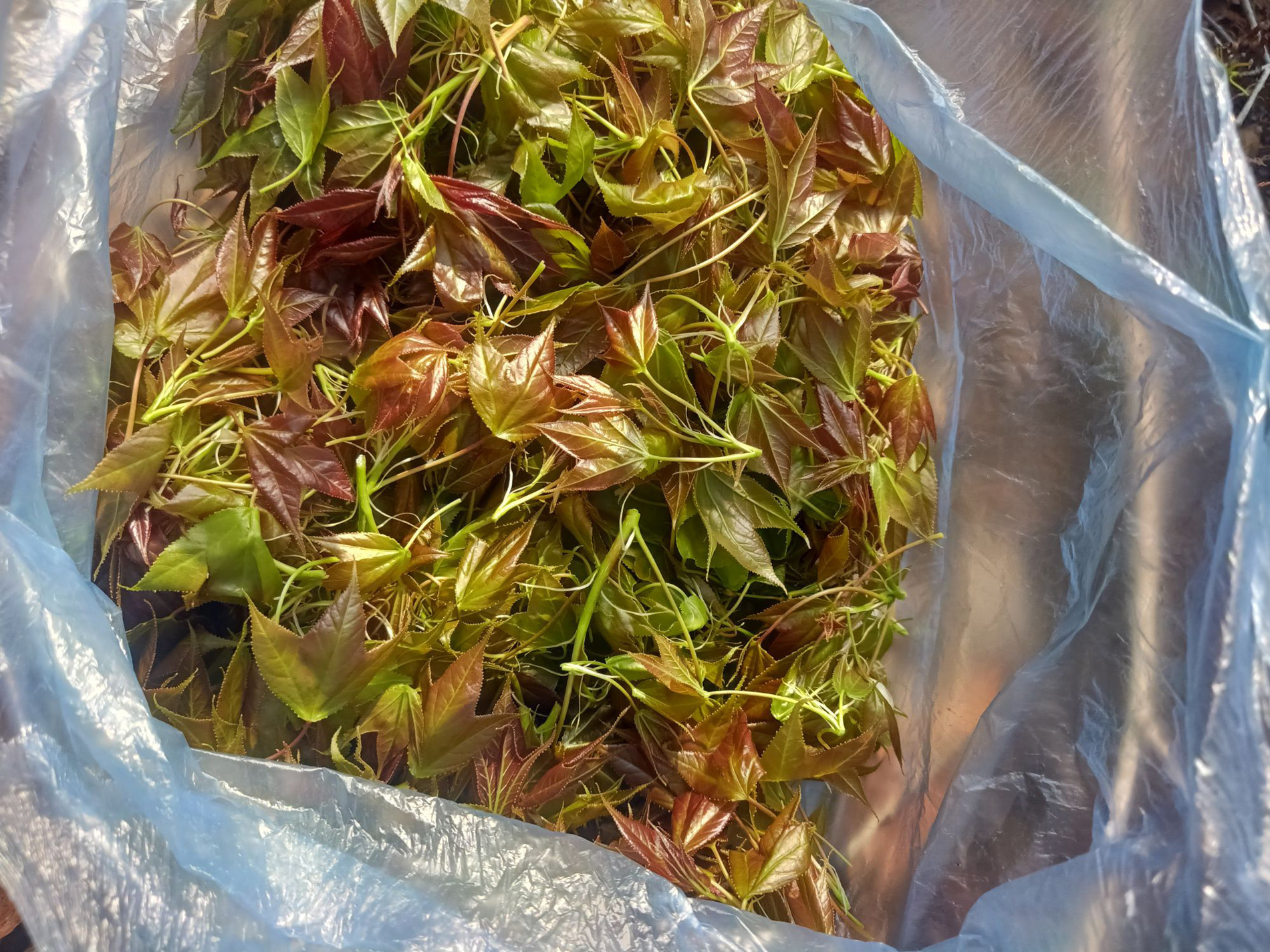
In Lang Son, young sau sau leaves are a species of a wild vegetable that appears in many northern provinces such as Lang Son, Cao Bang and Bac Kan, used by local people as an ingredient in food processing.
The vegetable is considered a unique spring delicacy, attracting many diners.
Do Thuy from Cao Loc district said rau sau sau is found throughout Lang Son province, but mostly in the districts of Van Quan, Cao Loc and Binh Gia.
This naturally growing, tall woody tree is also known by names like "sau trang," "phong huong," or "bach giao huong." Because of the tree's height, locals often find it difficult to harvest the young leaves for sale or culinary use.
Thuy said young sau sau leaves are typically harvested in January, when the weather transitions from cold to warm and experiences the first light rains of early spring.
Locals head into the forests to collect these young leaves, which are then bundled and sold along roadsides or in local markets at prices ranging from VND7,000 to VND10,000 per bundle.
"There are two types of la sau sau here - green and purple. The purple variety is more popular," she said.
Young sau sau leaves are primarily consumed raw, and are rarely cooked. As the leaves are picked up from high trees, they are relatively clean and need only a quick rinse before being eaten, without the need for elaborate processing.
For LangSon residents, young sau sau leaves are best when they are enjoyed raw, dipped in a unique "me" (sour Vietnamese fermented rice) sauce.
The "me" sauce is made from various ingredients and spices. First, chopped shallots are sautéed until fragrant, followed by tomatoes, which are mashed and cooked until they form a consistent paste. Next, filtered sour "me" juice is added, seasoned to taste, and finally, meat is cooked in the mixture for 3-5 minutes until it barely bubbles.
When served, the sauce is poured into a large, thick bowl to retain heat, with optional additions of chili and pepper. Because the dish is reliant on the sauce, locals often prepare a bowl size of soup.
The astringent, slightly bitter taste of young sau sau leaves blends with the sour taste of ‘me’ and the fatty taste of canned meat, creating an interesting, appealing to both adults and children.
In the second and third months of the lunar calendar, when young leaves turn older, people use them to make black sticky rice.
Thao Trinh